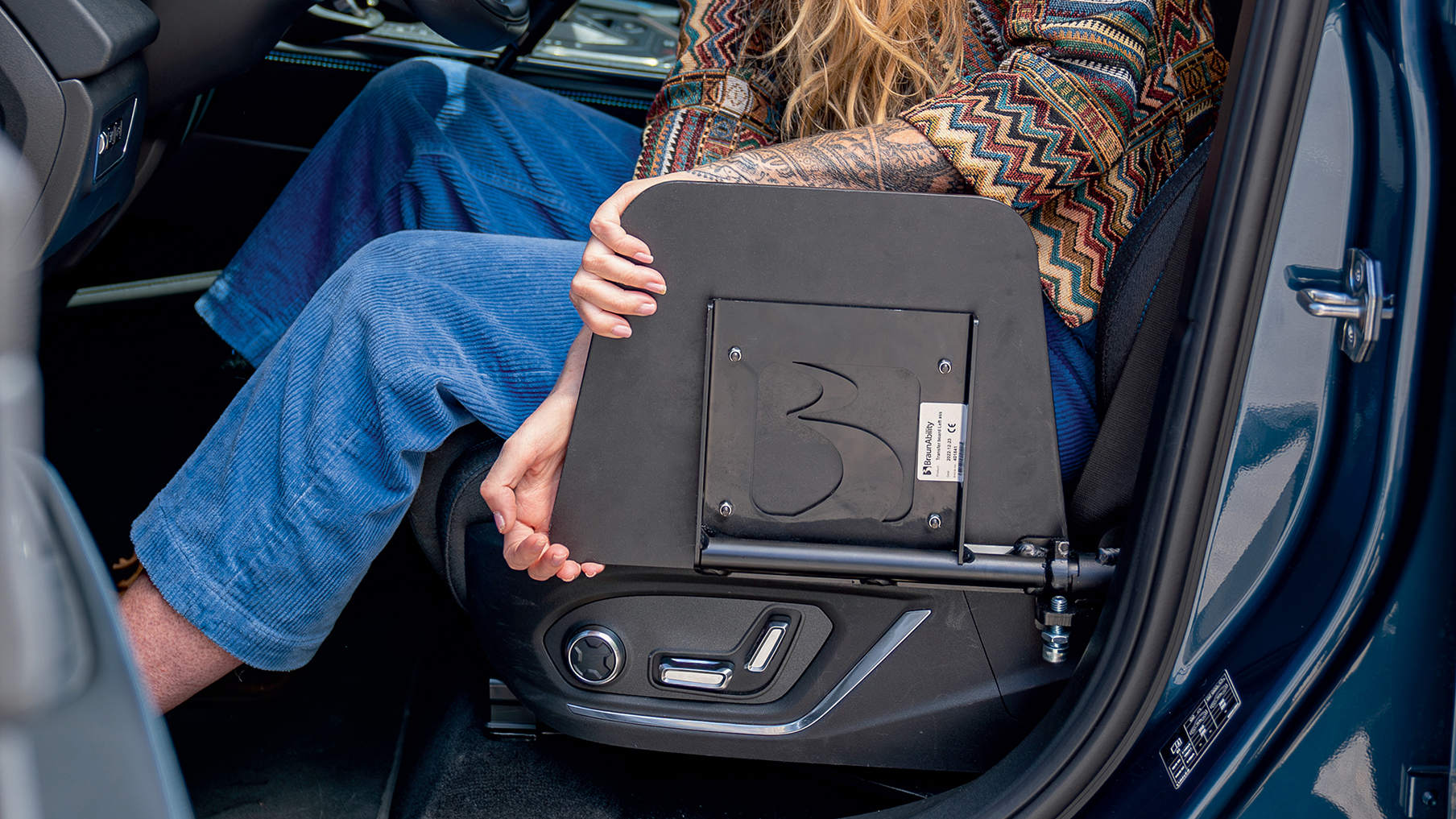Circumstances change. You may be at a stage in your life where you’re seriously considering moving to a Wheelchair Accessible Vehicle (WAV), but an adapted Motability Scheme car may be a better option for you. It can be a difficult decision to make, which is why Motability Operations’ Graham Lloyd, Accessible Vehicle Partnership Manager, and Dale Groves, Adaptations Manager, are here to answer the most frequently asked questions.
How do I decide if I should look at an adapted car rather than a WAV?
Dale: The key question you should ask yourself is: “Can I transfer and get out of my chair or mobility device into the car, either sliding across, using a swivel seat, or a person hoist?” If you can get from the rear of the vehicle to the front, or from the side of the vehicle into a seat, then an adaptations product could support you.
Graham: WAVs are excellent, but they are a solution for people that are full-time wheelchair users, and don’t have that ability to transfer. If you are confident that you can self–transfer, you are always far better off in a car seat. It’s more comfortable and designed to be used for travelling in a car.

How can I find out whether an adapted vehicle or WAV is best for my disability?
Graham: My honest advice would be to speak to both a WAV converter and an adaptations installer before you look at vehicles. You can find both of those on the Motability Scheme website by searching ‘find an installer’. Most installers do adaptations on WAVs, too.
An adaptation installer lives disability day–in day–out, has met thousands of customers over the years and, for the most part, is going to be able to spend two minutes with you and understand at least the starting point. For a car dealer, it’s so much harder.
Dale: If the customer needs an official assessment through Driving Mobility, the Motability Scheme will pay for that. If they’re just talking to an installer about what they might need, they’ll get a demonstration from the installer, if needed.
I can still transfer but my disability is progressive, should I still look at getting an adapted car?
Graham: No one can see into the future, and we don’t expect customers to. If you know that your condition is getting worse, then it’s probably a good idea to try and think about what the impact of those changes is going to be in the short term. But a three–year lease is a big commitment, so if you get halfway through the lease and your condition has progressed, you won’t be penalised for having to make the change to a different option. We would look, where possible, to refund part of the Advance Payment to you, paid pro rata.

Is it only my disability I need to consider?
Dale: It isn’t just the end user of your adaptations product that you need to consider, it will be the people that are with the disabled person most of the time when you travel. You can have a swivel seat, a boot hoist and all that good stuff, but if the people that you travel with most of the time wouldn’t be able to use it, it’s no good to you.
I’d like to use adaptations, available on the Motability Scheme, to get my child in a car, but I’m concerned they might outgrow them?
Graham: There’s a balance between choosing an adapted vehicle or a WAV for a disabled child. If they’re young and have ambulant parents who can transfer them in and out of a car seat, this is not such a problem, but children grow very quickly. If the child is five years old, you’ll probably be alright for three years, but, after that point, they start to become bigger and it’s going to take its toll.
Will the Motability Scheme enforce a solution they think is best?
Dale: There’s no push from the Motability Scheme on either solution. Converter partners are massively supportive of customers, and they’ll do a demonstration at a place and a time that suits you in a vehicle that you would likely be ordering.
Graham: It’s tempting to move into a WAV earlier than you need to, especially if you’ve got children. You’re trying to think: “Is this really going to work for us in the next three years?” But we don’t want people to be scared by taking a car lease. The temptation is to future-proof, especially when you’ve got kids to worry about, and not just the child that perhaps is the wheelchair user. By making that move to a WAV earlier than you need to, you’ve got larger advance payment and higher running costs of a WAV compared to an adapted car. We want people to have a WAV when they need one.
Got a question for Graham? Email Lifestyle@wonderly.agency





